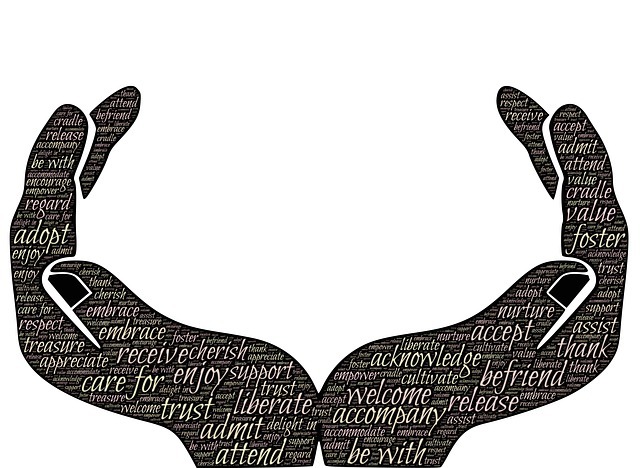1. Personal Safety First.
In addition to creating emotional safety in our relationships, it is also important to prioritize personal security. Feeling physically safe can contribute to overall emotional safety and well-being. This may involve taking precautions when walking alone at night, securing your home, and being aware of your surroundings. It is also important to trust your instincts and remove yourself from any situation that feels unsafe.
2. Prioritize the Interaction.
Put your cell away, turn off the tv, silence the computer. You may need to set an alarm if you have to be mindful of time. Sit together, take a deep breath, and clear your mind of all other than this moment as you exhale. Remember, when we speak, there are two things happening at all times, (1) We are building relationship (by attending to the other person), and (2) We are sharing information. Everything outside of the information is the relationship part. Simply turning everything off, tuning in, and sitting close conveys that we truly care.
3. Focus In the Moment.
Effective communication is key to creating emotional safety in a relationship. It is essential to express your thoughts, feelings, and needs openly and honestly, and to listen to your partner without judgment. Even when the thought is, “I don’t know what to say to make this better” or “I’m so overwhelmed I need to take a shower and a breath and circle back to this”. In a supporting role, it may be as simple as saying “How can I support you”. The concept is to stay in the current moment.
4. Use “I” and “We” statements.
When communicating, it is important to use “I” statements instead of “you” statements. For example, saying “I feel hurt when you don’t listen to me” instead of “You never listen to me” can help avoid blame and defensiveness.
5. Use Open and Active Listening.
When we actively listen, we are giving feedback as the other person speaks. I often encourage you to think about the way you listen and try to physically do the same things that you do when you talk. If you make eye contact when you talk, why turn away when you listen? If you close space and get closer when you talk, do the same when you listen. Also, making sounds, facial expressions, or hand gestures as you listen can help the person know that you are invested. Leaning in and mirroring their body language can also enhance the feeling of engagement.
6. Paraphrase instead of Sharing your Perception.
Approach the situation with a candid curiosity and empathy for the emotion being experienced. Do not focus on fixing or sharing your opinion. The goal of this connection is to simply allow the other person a feeling of being heard and not rushed or judged. Share what you heard expressed, as an emotion, and then as the content. So something like: “I see how sad this makes you. Having troubles at work reminds you of when you were little and being yelled at by your parents.”
7. Clear the Space or Reschedule.
If the timing of the need for safe space does not coincide with the availability to provide it, reschedule it within the day. Make sure to circle back as quickly as possible; this may be after the call or before bed. It can be helpful to get a check on how urgent the matter is before making this decision. Sometimes, we may have to cancel the call to keep a loved one in a safe mindset.
8. Convey Healthy Boundaries.
Safe emotional space is a mutually safe experience. If the content becomes triggering, causes resentment or frustration, and/or simply is more energy than we have, convey the limits with a specific statement of what you cannot manage and what you would like instead. When we set a boundary, it is incredibly important to give the recipient a more appropriate route to the connection. For example, “I want to be here for you, but when you use this space to criticize me, I cannot. I need a moment to get my feet back under me. Let’s circle back later. I would love to be your hero, I need to be treated like I’m on your team”
9. Shift the Way you Approach the “Problems”.
It is important to focus on observing the experience “side by side”. For instance, if you think about a relationship as a garden and you see beautiful flowers and weeds and you are standing at the edge of the soil with your partner and you say “wow our rose is beautiful, but is that a weed or a flower next to it?”. This is the same nature we should approach difficulties with. Any difficulty impacts both people in the relationship so, simply acknowledging this from the start can be helpful. Together, we can face anything. If we are pointing at one another accusing each other of wrongdoing, the weeds grow higher and we grow more depleted.
10. Listen, Assumptions may be Wrong.
Stop saying what the other “wants” to hear or assuming you know what they will say in response. In fact, get that out of your head all together and say the thing you truly think even if the thought is “I am having a hard time finding the words to say how I feel and keep defaulting to what I think you want to hear.”
11. Value in the Safe Space.
Recognizing that the way to it is through it can be helpful. We cannot always couch a relationship from distress. When we do so, it undermines our ability to be taken seriously and can actually cause more anxiety. The other person may actually find themselves questioning more of what we say. Say what you mean. Say it gently and say it. If the truth is painful, so be it. Life is painful. We may ask a follow up in terms of helping the other be soothed such as “I know that was a hard thing to hear. How can I support you right now?” We must NOT backpedal or try to fix it.

